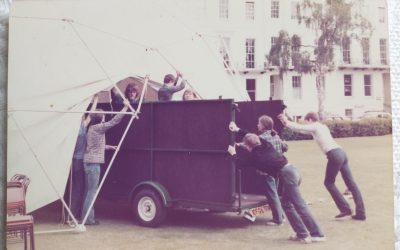 I have been listening to various recordings of Mozart’s K488 piano concerto made by pianists in the 1940s, 50s and 60s. In all of them, as if by some strange consensus, the slow movement is taken very slowly. It seems to have been a fashion back then to treat Mozart Adagios as very slow.
I have been listening to various recordings of Mozart’s K488 piano concerto made by pianists in the 1940s, 50s and 60s. In all of them, as if by some strange consensus, the slow movement is taken very slowly. It seems to have been a fashion back then to treat Mozart Adagios as very slow.
As I listen, I don’t just think, ‘this is slow’. I think, ‘this is *too* slow’. It’s as if some delicate balance has been upset. I feel as if someone has their foot on the brakes all the time instead of driving happily along.
What determines one’s feeling about tempo? Is it to do with one’s physique – how lightly or heavily one’s hand lies on the piano keys, how easily one moves around the instrument? Physical weight or stiffness could certainly make one feel that a speed is too fast, or too slow.
But my judgement about tempo seems to be independent of whether I’m playing or not. My sense of the right tempo is determined by something else – by some kind of relationship between the musical material and the speed it’s being played at.
I remember György Sebök saying that if the tempo is too slow for the musical content, the music will feel like a piece of chewing gum being stretched too thinly and losing its ideal texture.
If the tempo is too fast for the content, it can feel as if notes are being stuffed into your mouth like handfuls of peanuts you don’t have time to chew. (That’s my analogy, not Sebök’s.)
Yet although people have strong personal reactions to tempo, reactions vary from person to person. You probably won’t get everyone in the audience agreeing that something was too fast or slow.
All of which reminds me that the Italian word tempo is also the word for the weather.
Whatever the weather, some will feel comfortable while others long for it to be warmer – or cooler. So perhaps one’s response to tempo (or weather) is to do with one’s heartbeat, temperature and breathing patterns.




I agree, it is very subjective. I find my response to tempo varies with my mood. I have different recordings of the same piece, and will choose a faster or slower one depending on how I feel (e.g. for Chopin’s op. 61 polonaise, Argerich for fast and furious, Pires for slow and meditative – both are superb).
Such a very interesting post! We are a product of our time, and what seemed right for our grandparents may not seem quite right for us…
I want to make the observation that in your own recording of Schubert’s E flat trio, the slow movement, your tempo seems so very perfect to me yet other (equivalently famous) chamber groups take is differently.
We should forget the idea of ‘wrong’ or ‘right’, and just enjoy different interpretations, I think.
Thank you James, I am so pleased you like the tempo of the slow movement in Schubert’s E flat Trio, because that was something that occupied my mind for a long while. Trudging, yet moving forwards.
Andante con moto – how life must be lived!
You’ve written, I think, about how you ‘discovered’ the tempo while walking through the snow on a wintry day… wonderful music.
What an interesting post. I wonder if you would agree, perhaps especially in Mozart, that the tempo does not necessarily have to be super fast for the music to seem lively? I’m an amateur orchestral violinist, not a professional pianist, and as such have accompanied a fair few brilliant soloists. Thinking of the best, most exciting performances I’ve been part of, it seems to me that a light touch, and a shared spirit and understanding between soloist and orchestra can often communicate more “fizz” than a headlong scramble of notes.